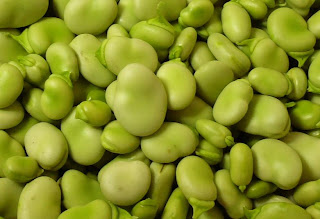 Photo by ROBERT CHARLES
Photo by ROBERT CHARLES
Permaculture paradise
The Tribune, Sunday, 4 November 2007
Urban Permies are creating sustainable human environments, reports Ruth Vlaming.
Think sustainable and what springs to mind? Probably renewable energy, organics, recycling, but what about permaculture?
Permaculture, as defined its co- founder Bill Mollison, is a system for creating sustainable human environments. And in Palmerston North the Urban Permies are putting permaculture principles to work in the backyard.
Founder of the group, Esther Teoh, and husband Matthew Hook, have gradually converted their 640m2 property into a permaculture paradise, since acquiring it four years ago.
The quietly clucking chooks and flourishing veggies, interspersed with fruit trees and flowering plants, testify to their efforts to put theory into practice.
Ms Teoh says permaculture is about systems and relationships. For example, chooks scratch over the soil, helping prepare it for planting by removing pests and seeds and manuring it. They also provide fresh eggs. The chooks are moved around the property in a homemade portable chicken tractor.
Since things work together there is often less need for pest control, ground cultivation and weeding than conventional gardening methods - an important aspect with the couple working full-time, and doing house improvements. Ms Teoh finds the aesthetics of mixed planting pleasing too.
It wasn't difficult to find the information with plenty on the internet and in books and magazines.
Wikipedia says the word permaculture, coined by Australians Bill Mollison and David Holmgren during the 1970s, is a portmanteau of permanent agriculture and permanent culture.
Through a series of publications, Mollison, Holmgren and their associates documented an approach to designing human settlements, in particular the development of perennial agricultural systems that mimic the structure and interrelationship found in natural ecologies.
Ms Teoh and Mr Hook have enjoyed the harvest of the past year with highlights 10kg of tomatoes from one plant last summer, and buckets of peas through winter. A stroll around the garden reveals blossoming apple, pear and quince trees, and immature fruit on the almond and currants. Newly planted beds of brassicas, leeks and celery are mounded with compost.
The wind break doubles as a trellis for vines, and also provides shade for smaller plants.
The very functional garden has not sacrificed attractiveness for production, however. A pretty variegated mint spills on to the path and rainbow silverbeet brighten the garden under the kitchen window. Calendulas provide splashes of colour throughout, and two manukas in full flower contrast with impressive globe artichoke heads.
All this is quite an achievement for someone who seven years ago didn't know anything about gardening.
"I killed cacti," Ms Teoh laughs.
A period of ill-health stimulated an interest in herbal remedies. Her first garden consisted of pots on a balcony. There herbs thrived and tomato plants flourished, enthusing her with rewarding harvests.
Ms Teoh dismisses the suggestion Palmerston North's climate is problematic for growing one's own food. It simply doesn't suit some plants, such as the banana plant she tried. And wind protection is vital, but possible with planning and design to achieve shelter and smooth wind flows. Observation is also important - noting what thrives where.
She says permaculture involves gradually working out solutions and always learning.
Total self-sufficiency is not the aim - the couple still buy basics such as rice, sugar and flour, but grow most of the vegetables they need and increasingly more fruit.
To share her passion for permaculture, Ms Teoh started Urban Permies earlier this year. The group meets on the first Saturday of every month to discuss permaculture principles and share tips, ideas and even produce.
"It's a place for interaction with like- minded people, you learn by sharing," Ms Teoh says.
New members are welcome and membership is free. For details email urbanpermies@orcon.net.nz or visit www.urbanpermaculture.org.nz.










